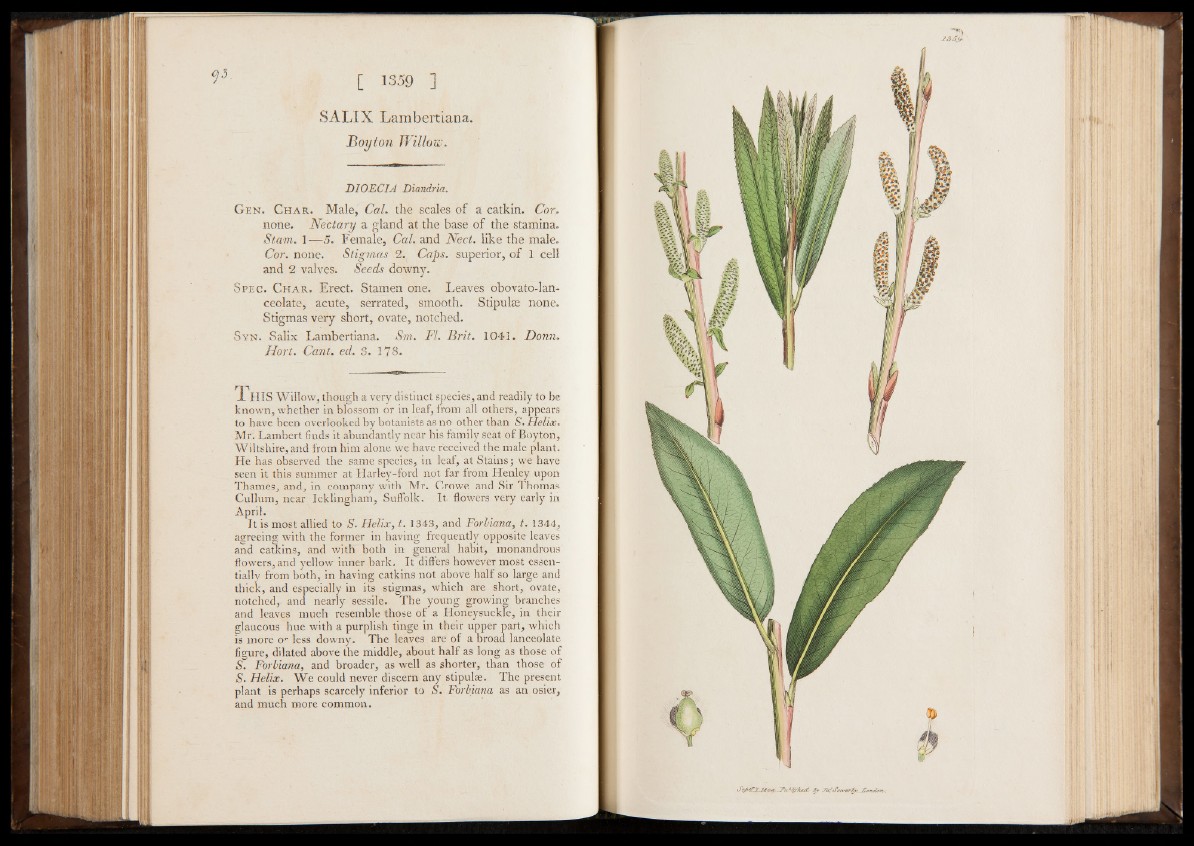
°>b [ 1359 ]
S A L IX L am b e rtia n a .
Boyton Willow.
BIOECIA Diandria.
Gen. Char. Male, Cal. the scales of a catkin. Cor,
none. Nectary a gland at the base of the stamina.
Stam. 1— 5. Female, Cal. and Neel, like the male.
Cor. none. Stigmas 2. Caps, superior, of 1 cell
and 2 valves. Seeds downy.
Spec. Char. Erect. Stamen one. Leaves obovato-lan-
ceolate, acute, serrated, smooth. Stipulm none.
Stigmas very short, ovate, notched.
Syn. Salix Lambertiana. Sm. FI. Brit. 1041. Donn.
Hort. Cant. ed. 3. 178.
*1 HIS Willow, though a very distinct species, and readily to be
known, whether in blossom or in leaf, from all others, appears
to have been overlooked by botanists as no other than S. Helix.
Mr. Lambert finds it abundantly near his family seat of Boyton,
Wiltshire, and from him alone we have received the male plant.
He has observed the same species, in leaf, at Stains; we have
seen it this summer at Harley-ford not far from Henley upon
Thames, and, in company with Mr. Crowe and Sir Thomas
Cullum, near Icklingham, Suffolk. It flowers very early in
April.
It is most allied to S. Helix, t. 1343, and Forliana, t. 1344,
agreeing with the former in having frequently opposite leaves
and catkins, and with both in general habit, monandrous
flowers, and yellow inner bark. It differs however most essentially
from both, in having catkins not above half so large and
thick, and especially in its stigmas, which are short, ovate,
notched, and nearly sessile. The young growing branches
and leaves much resemble those of a Honeysuckle, in their
glaucous hue with a purplish tinge in their upper part, which
is more o’- less downy. The leaves are of a broad lanceolate
figure, dilated above the middle, about half as long as those of
S. Forliana, and broader, as well as shorter, than those of
S. Helix. We could never discern any stipulse. The present
plant is perhaps scarcely inferior to S. Forliana as an osier,
and much more common.